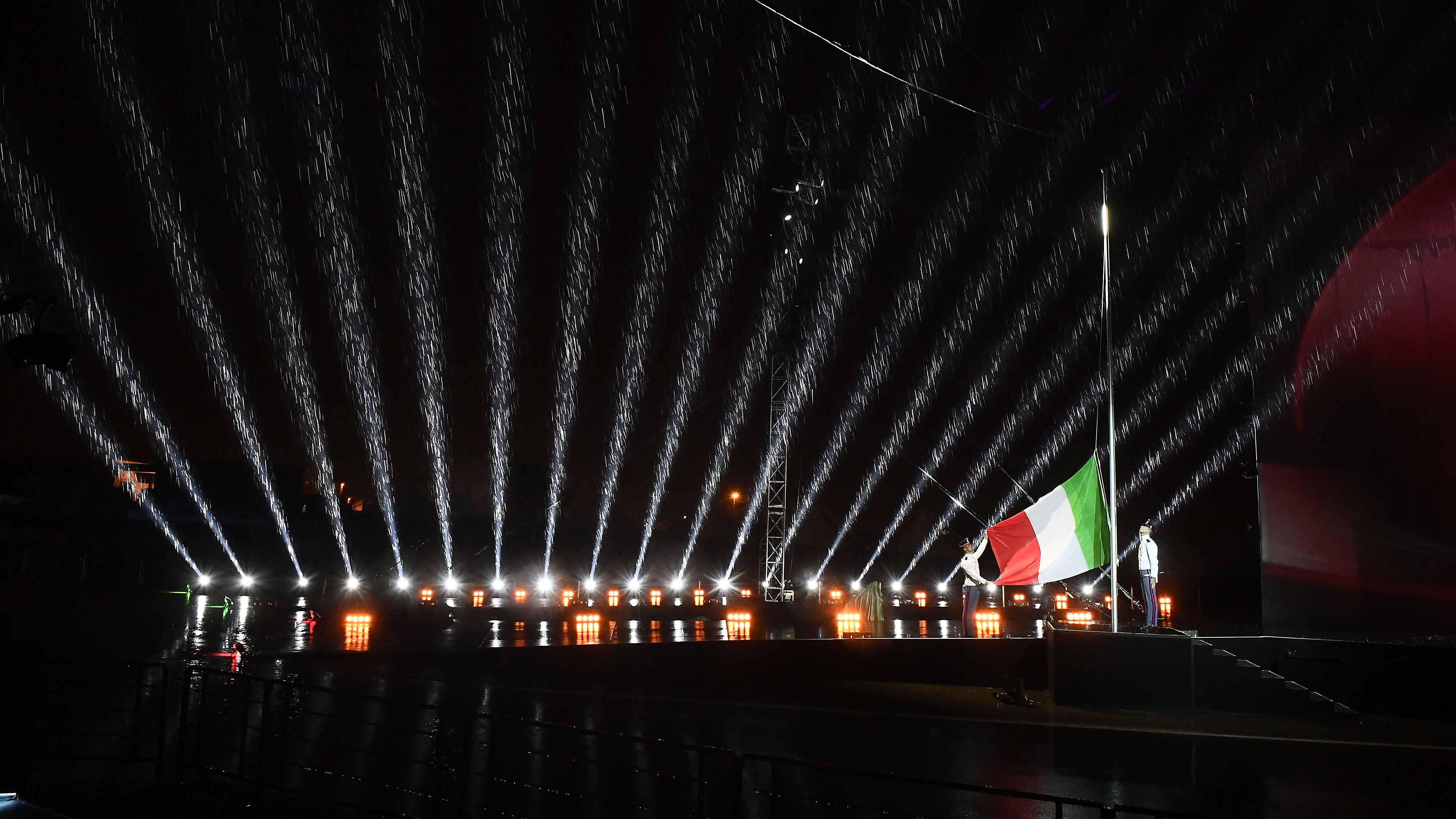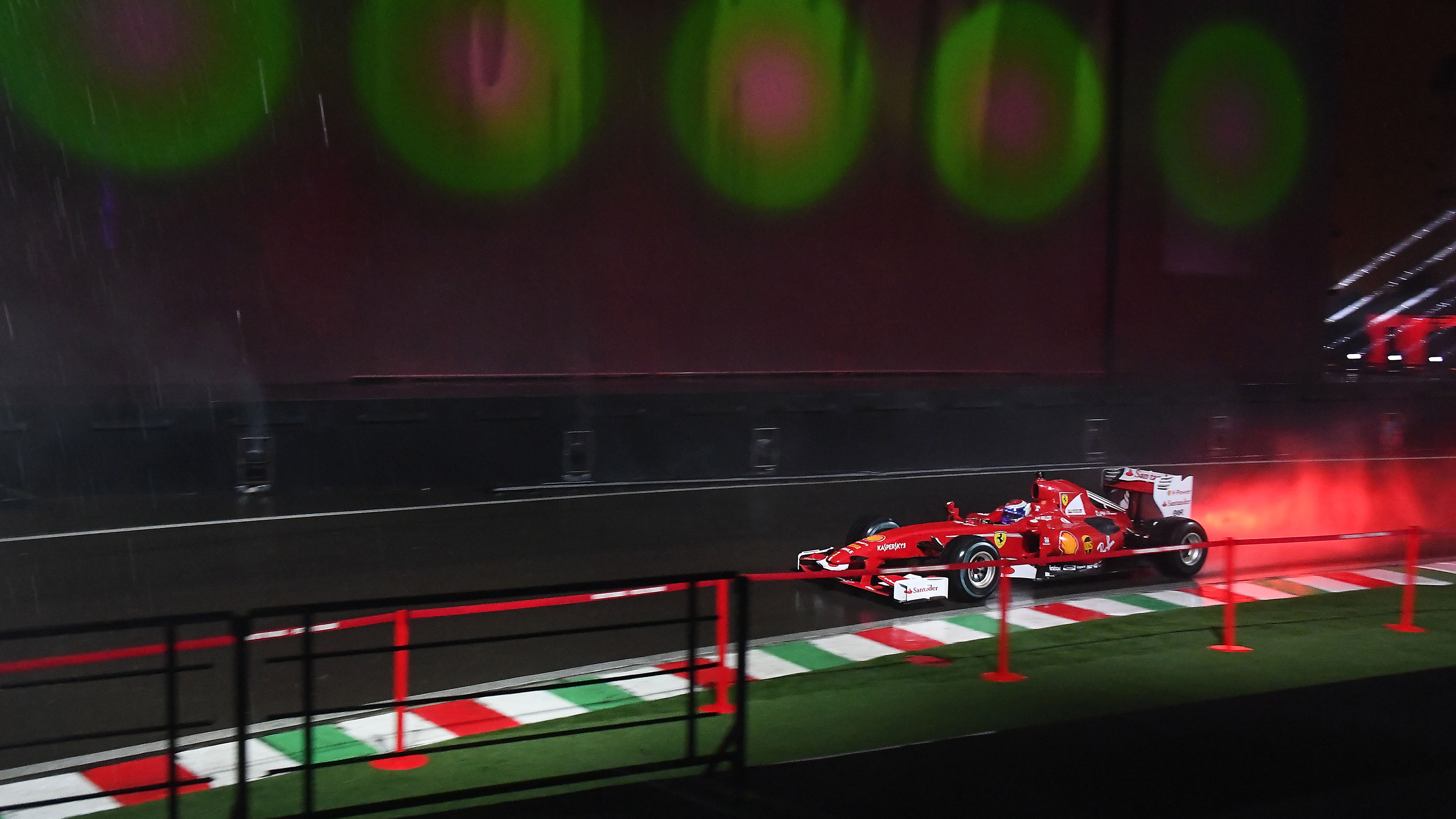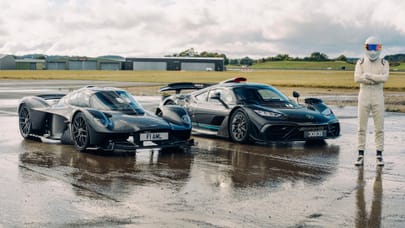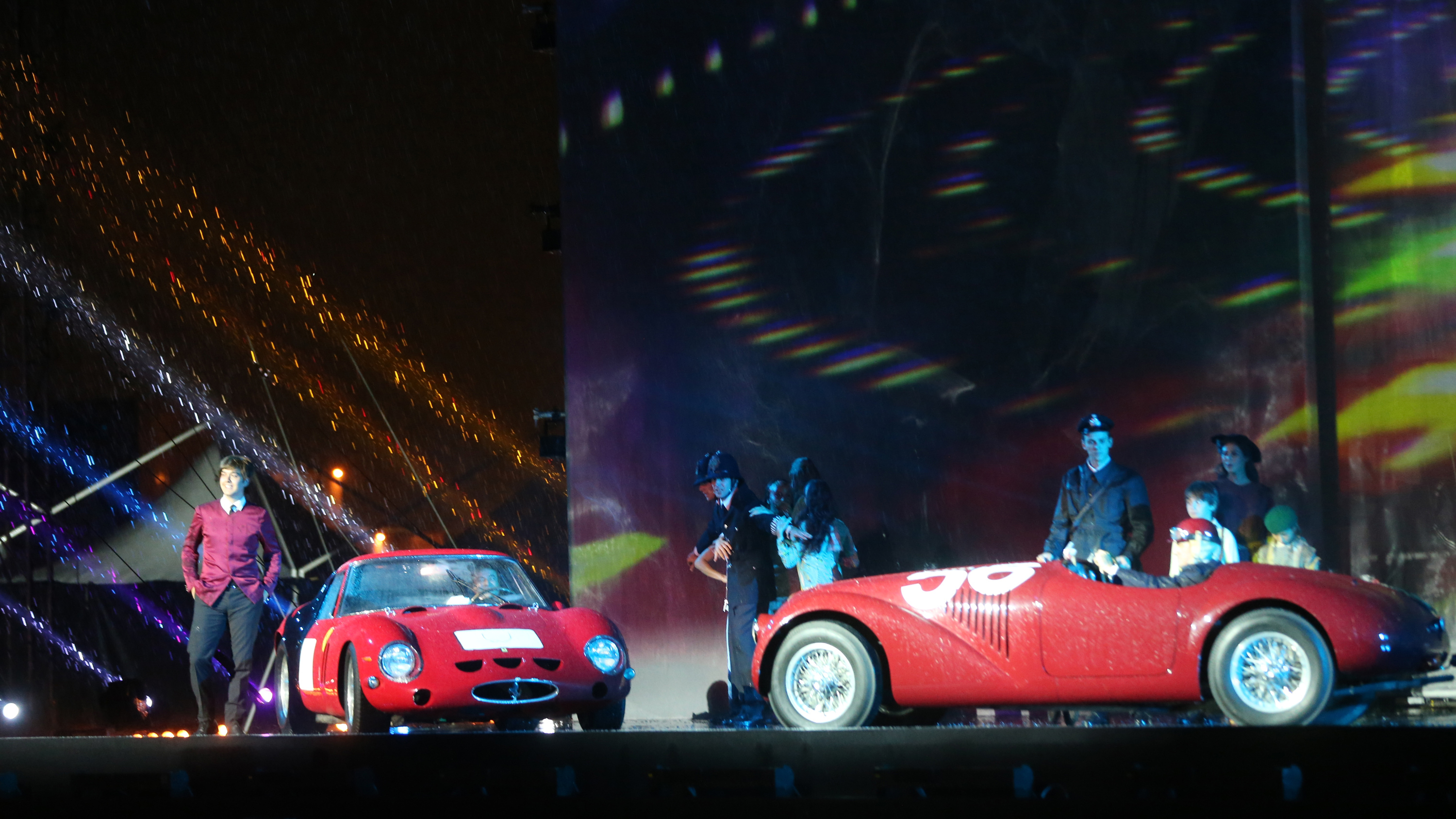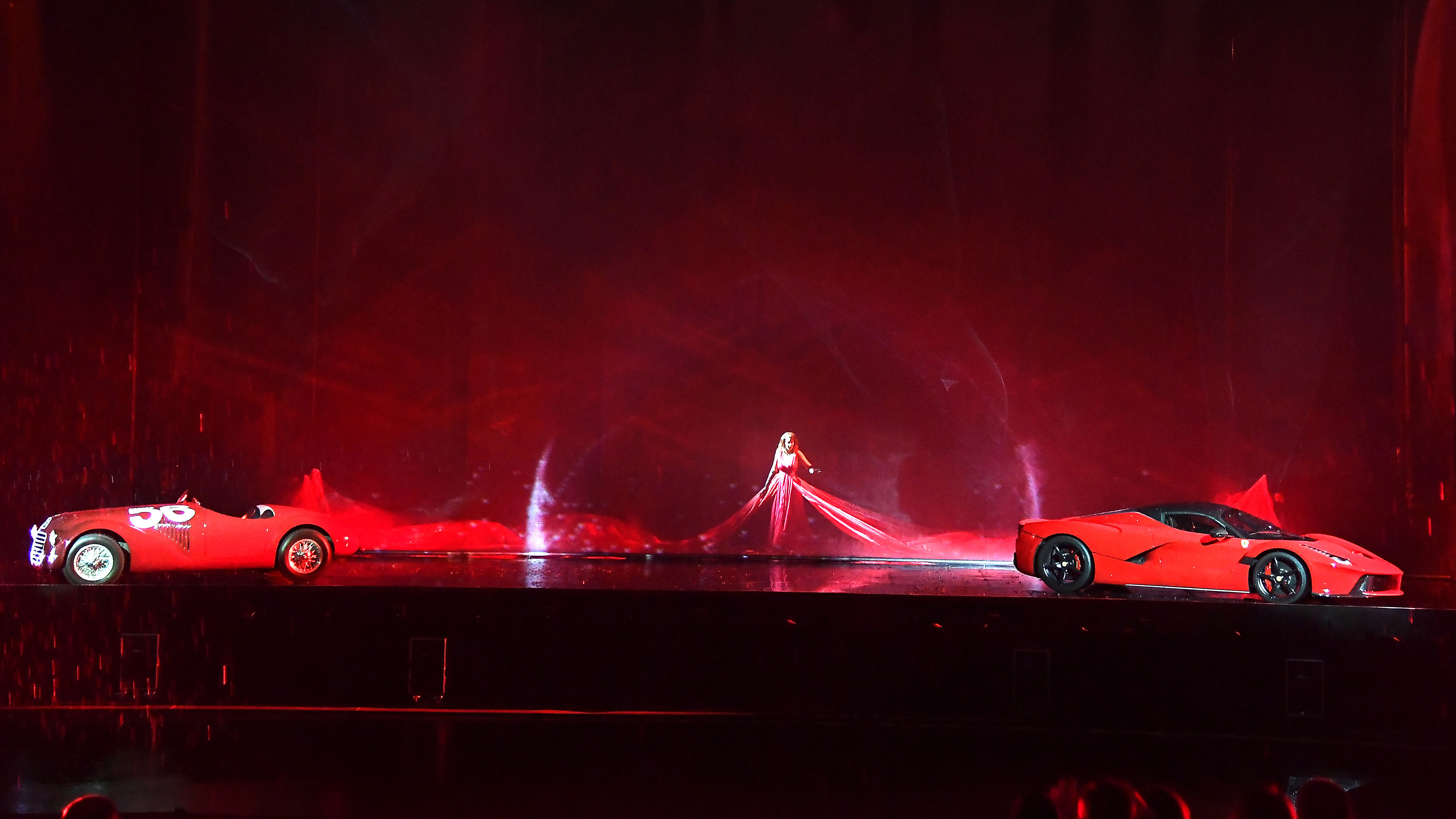
Ferrari at 70: Maranello celebrates
The Prancing Horse marks 70 years in the business. Here's the story...
Setting aside the branded teddy bears and novelty aftershave that wear the prancing horse, Ferrari’s overarching ethos remains as brutally simple as it was in 1947. Technology: the great motive force for change, to help Maranello build the pointiest, fastest supercars on planet earth.
Ferrari is 70 years old this year. And we suspect Enzo wouldn’t struggle to recognise the company he started all those years ago. Last weekend at Ferrari’s private test track, there was a thunderstorm of… um, passion. A real, actual thunderstorm joined it, punctuated by bursts of lightning firing up the Maranello sky as though prescribed by Il Commendatore himself.
There were some genuinely emotional and inventive segments to the evening’s stage show. A show that demonstrated that, actually, Ferrari has come a long way. One in particular stood out, where each decade of Ferrari’s existence was represented by a particular car: the 125 S – the very first Ferrari – arrived on stage first, followed by the gorgeous 250 California Spider against a backdrop of ‘Only You’ by The Platters.
The Sixties were represented by the stunning 250 GTO, the 512 BB covered the Seventies (with a funky disco soundtrack), the Testarossa in a Miami Vice-themed entrance for the Eighties, the F50 for the Nineties generation (complete with a Spice Girls vs MC Hammer dance-off), and the Enzo for the Noughties.
Finally, the LaFerrari Aperta. At this point, the passion was boiling to dangerous levels. The following segment showcased Ferrari’s motorsport success, and there was a quite wonderful outpouring of applause when Schumacher’s face appeared on screen.
But look back over that roster of cars and you can chart the spikes, the technology leaps that forged the next generation of fast. There were gradual increments, sure, but there were also huge leaps forward.
Ferrari has always adhered to this dictum of progress through technology, as opposed to time. Speaking to TopGear.com, Michael Leiters (Ferrari’s chief tech officer) recently noted: “Our philosophy is not to present a new LaFerrari every ten years. We want to present a new supercar when we have defined a new roadmap of innovations and technology.
“And only if we are convinced that the combination of this innovation will create the new stage of Ferrari performance, will we develop a new supercar.”
Nothing innovates as fiercely or as robustly as racing. Racing is the reason why Ferrari even exists
And nothing innovates as fiercely or as robustly as racing. Racing is the reason why Ferrari even exists. A cursory glance at Ferrari’s hypercar history, for example, gives provenance to this theory. The gorgeous 250 GTO from the Sixties featured the race-proven 3.0-litre V12 from the Le Mans-winning Testa Rossa.
The 288 GTO? Gorgeous. But also a car that bore the hallmarks of Formula One deep within. The steel spaceframe, use of Kevlar, fibreglass and aluminium, the 395bhp V8 mounted longitudinally – matched to a racing gearbox – that allowed more efficient packaging of the turbos and ancillaries.
Then comes the one everyone gets gooey over: the F40. The last Ferrari to have been overseen by Enzo himself, conceived as a racecar for the road. You’re looking at a road car with a tubular steel space frame, bonded Kevlar panels and carbonfibre doors, bonnet and boot. It spent lots of time in the wind tunnel. The engine featured exotic lightweight materials. It was hairy. And remains the iconic poster Ferrari.
F50? An engine that shared DNA with Prost’s 1990 F1 car, used as a stress-bearing member. The Enzo featured electronics and systems honed by Michael Schumacher himself, while LaFerrari ushers in the dark arts of hybridisation… not for efficiency, but to boost the naturally aspirated V12 on board. Everything in the name of performance, and nothing else.
Top Gear
Newsletter
Thank you for subscribing to our newsletter. Look out for your regular round-up of news, reviews and offers in your inbox.
Get all the latest news, reviews and exclusives, direct to your inbox.
Speaking of V12s, Ferrari assures us that the future looks bright for the big lump. “Our customers love the V12,” Leiters recently told us. “They love the sound and the response and the feeling of power climbing smoothly, and for me this is more important than just having a big number.” He reckons the 812 Superfast’s V12 – with a big, fat 789bhp – is still good for another four years. After that, they’ll look into ‘alternative technologies’.
Ah yes, ‘alternative technologies’. The march towards electrification across the motoring world has gained unprecedented momentum of late, spurred on by a number of factors. And for Ferrari, the ethos – as demonstrated by the LaFerrari and its electrically boosted V12 – remains the same: it has to benefit performance, at the expense of anything else.
“Hybridisation, for us, always has to be focused on performance,” explains Leiters. “That means performance of the powertrain, but also of the power systems. The process of electrification of some components, then, is important to us.”
‘To us’. Ferrari’s Leonardo Fioravanti – one of the architects of the original F40 – noted how at the time of the F40, Enzo’s desire for a hard-edged, no-compromise Ferrari was overwhelming. “Il Commendatore asked for my opinion on this experimental prototype, the 288 GTO Evoluzione,” he remarked. “It was then that he first talked to me of his desire to produce a ‘true Ferrari’.” True in this case, meaning ‘raw’. Fast. Uncompromising.
It’s clear, then, that while Ferrari’s technical innovation remains the company’s motive force, the end result still has to be raw and exciting. Just, nobody mention the teddy bears…
Trending this week
- Long Term Review
Life with a 500bhp BMW 550e: do you really need an M5?




